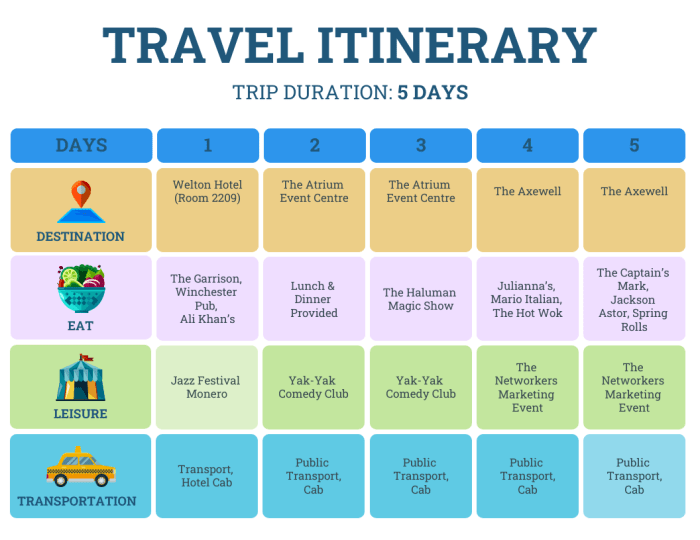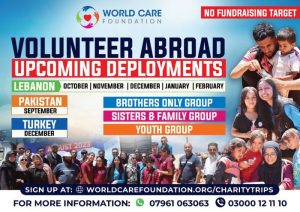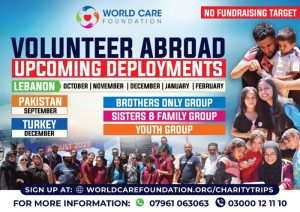
Kid-friendly travel itineraries are more than just lists of destinations; they’re blueprints for creating unforgettable family memories. This guide explores everything from choosing the perfect location and finding affordable flights to crafting itineraries that cater to diverse age groups and interests, ensuring a smooth and enjoyable experience for parents and children alike. We’ll delve into practical tips for managing budgets, navigating different modes of transportation, and selecting accommodations that meet the needs of families.
Whether you dream of theme park adventures, relaxing beach vacations, or exploring national parks, this resource will equip you with the knowledge and tools to plan a successful family getaway.
Cruise Ship Reviews

Choosing the right cruise line for a family vacation is crucial for a memorable experience. Different lines cater to varying needs and preferences, particularly when it comes to children’s activities and overall onboard atmosphere. This section will review three popular family-friendly cruise lines, comparing their offerings and highlighting the advantages and disadvantages of cruising with children.
Family-Friendly Cruise Line Comparisons
This section compares three popular cruise lines known for their excellent family-oriented amenities: Disney Cruise Line, Royal Caribbean International, and Carnival Cruise Line. Each offers unique experiences designed to appeal to different age groups and family dynamics.
| Cruise Line | Strengths | Weaknesses |
|---|---|---|
| Disney Cruise Line | Immersive Disney theming, character meet-and-greets, age-specific clubs (e.g., Oceaneer Club for younger children, Edge for teens), exceptional kids’ programming, high-quality dining options. | High cost, potential for crowds, limited adult-only spaces (though some are available). |
| Royal Caribbean International | Wide array of activities for all ages, including water parks (e.g., Perfect Storm), ice-skating rinks, mini-golf, adventure ocean, and extensive youth programs, diverse dining options. | Can feel overwhelming with so many choices, some activities may have additional fees, potentially large crowds. |
| Carnival Cruise Line | More affordable option, vibrant and lively atmosphere, good selection of kid-friendly activities, family-friendly shows and entertainment, dedicated kids’ clubs. | Can be noisy and less refined than other lines, fewer luxury amenities, some activities may feel less sophisticated. |
Kid-Friendly Activities Offered by Different Cruise Lines
The range of activities offered varies greatly between cruise lines. Disney Cruise Line excels in immersive Disney experiences, integrating characters and storylines into various activities. Royal Caribbean focuses on thrilling adventures and a wide variety of choices. Carnival provides a fun and energetic atmosphere with a solid selection of classic kids’ activities. For example, Disney offers character breakfasts and interactive shows, while Royal Caribbean boasts water parks and ice-skating rinks.
Carnival often features family-friendly game shows and parades.
Pros and Cons of Cruising with Children
Cruising offers many advantages for families. The all-inclusive nature simplifies budgeting and planning. Children enjoy the abundance of activities and entertainment. Parents appreciate the convenience and the chance to relax and enjoy some downtime. However, cruising can also present challenges.
Seasickness can be a concern for some children. The confined environment can lead to cabin fever. Managing the logistics of a large family on a ship can be demanding.
Importance of Choosing a Cruise Line that Caters to Different Age Groups
Selecting a cruise line with age-appropriate activities is essential for a successful family vacation. A cruise line that caters well to different age groups minimizes the likelihood of boredom or dissatisfaction among family members. For instance, a cruise line with dedicated youth programs for toddlers, tweens, and teens ensures that children of all ages have engaging experiences tailored to their developmental stages and interests.
This reduces the burden on parents and allows everyone to enjoy the trip fully.
Road Trip Guides
Embarking on a cross-country road trip with your family can be an unforgettable adventure, filled with exciting discoveries and lasting memories. Careful planning, however, is key to ensuring a smooth and enjoyable journey for everyone involved. This guide provides practical advice and tips to help you navigate the challenges and maximize the fun of your family road trip.
Cross-Country Family Road Trip Itinerary: Coast to Coast Adventure
This itinerary focuses on a journey from New York City to Los Angeles, highlighting kid-friendly attractions along the way. Adjustments can easily be made to fit your family’s interests and time constraints.
Day 1-3: New York City to Washington D.C. Explore NYC’s iconic landmarks like Times Square and Central Park before heading south to Washington D.C. Visit the National Air and Space Museum and the National Zoo.
Day 4-5: Washington D.C. to Great Smoky Mountains National Park, Tennessee. Enjoy the natural beauty of the Great Smoky Mountains. Hike easy trails, discover waterfalls, and enjoy the scenic drives. Consider a visit to Dollywood, a theme park with rides suitable for all ages.
Day 6-7: Great Smoky Mountains to Nashville, Tennessee. Experience Nashville’s vibrant music scene with a family-friendly show. Visit the Country Music Hall of Fame and explore the city’s many parks.
Day 8-10: Nashville to Oklahoma City, Oklahoma. Stop at the National Cowboy & Western Heritage Museum in Oklahoma City, offering interactive exhibits perfect for children. Explore the city’s vibrant Bricktown entertainment district.
Day 11-13: Oklahoma City to Santa Fe, New Mexico. Immerse yourselves in the unique culture of Santa Fe. Visit the Georgia O’Keeffe Museum and explore Canyon Road’s art galleries. Enjoy the city’s stunning architecture and Southwestern charm.
Day 14-16: Santa Fe to Grand Canyon National Park, Arizona. Witness the breathtaking grandeur of the Grand Canyon. Take a mule ride (age and health permitting), hike along the rim, and enjoy ranger programs. Consider a helicopter tour for a unique perspective.
Day 17-19: Grand Canyon to Las Vegas, Nevada. Experience the dazzling lights and shows of Las Vegas (choose family-friendly options). Visit the Bellagio Conservatory & Botanical Garden, known for its stunning floral displays.
Day 20-22: Las Vegas to Los Angeles, California. Explore Los Angeles’ iconic attractions like Hollywood Walk of Fame, Griffith Observatory, and Disneyland (or other theme parks).
Packing Essentials for a Family Road Trip
Thorough preparation is crucial for a smooth road trip. A well-packed car ensures everyone’s comfort and minimizes stress during the journey.
Clothing: Pack comfortable, versatile clothing items suitable for various weather conditions. Include layers, rain gear, and sturdy shoes for hiking or exploring. Don’t forget swimwear if you plan on visiting any water attractions.
Toiletries: Pack travel-sized toiletries to save space and weight. Include sunscreen, insect repellent, hand sanitizer, and any necessary medications.
Entertainment: Bring a variety of entertainment options to keep children occupied during long drives. This could include books, games, tablets loaded with movies and games, and coloring books.
Snacks and Drinks: Pack plenty of healthy snacks and drinks to avoid frequent stops and expensive purchases. Include water bottles to stay hydrated.
First-Aid Kit: A well-stocked first-aid kit is essential for dealing with minor injuries and illnesses. Include bandages, antiseptic wipes, pain relievers, and any necessary prescription medications.
Other Essentials: Don’t forget items like maps (or GPS device), chargers for electronic devices, a cooler, trash bags, and a flashlight.
Keeping Children Entertained During Long Car Rides
Long car rides can be challenging, but with careful planning, you can keep children entertained and prevent boredom.
Audiobooks, podcasts, and music can provide hours of entertainment. Plan a variety of options to suit different tastes and moods. Involve children in creating playlists or choosing audiobooks.
Games and activities are crucial for keeping children engaged. Bring along travel games, card games, and coloring books. Consider age-appropriate activities like “I Spy” or license plate games.
Regular breaks are essential for preventing restlessness and ensuring everyone’s comfort. Plan stops at parks, rest areas, or interesting roadside attractions to allow children to stretch their legs and burn off energy.
Involving children in the planning process can increase their excitement and anticipation for the trip. Allow them to choose some of the destinations or activities.
Managing Car Sickness and Other Travel-Related Health Issues for Children
Car sickness and other travel-related health issues are common occurrences, especially in children. Being prepared can minimize discomfort and ensure a more enjoyable journey.
Car Sickness: To prevent car sickness, encourage children to sit in the front seat (if age-appropriate and safe), avoid reading or looking at screens during the ride, and ensure adequate ventilation. Ginger candies or acupressure wristbands can help alleviate symptoms.
Other Health Issues: Pack a well-stocked first-aid kit with medications for common ailments such as headaches, stomach aches, and allergies. Consult your pediatrician before the trip to discuss any necessary precautions or medications.
Hydration and Nutrition: Ensure children stay well-hydrated and eat nutritious foods throughout the journey. Dehydration and poor nutrition can exacerbate travel-related illnesses.
Rest and Sleep: Encourage children to get adequate rest and sleep during the trip. Fatigue can increase the risk of car sickness and other health problems.
Budget Accommodation Tips
Finding affordable and comfortable family-friendly accommodations is key to a memorable and stress-free vacation. Careful planning and consideration of various options can significantly reduce travel expenses without sacrificing quality. This section explores strategies for securing budget-friendly lodging, comparing different accommodation types and highlighting ways to save money during peak seasons.
Comparing Accommodation Types: Hotels, Vacation Rentals, and Camping
Hotels, vacation rentals, and camping each offer unique advantages and disadvantages regarding cost and amenities. Hotels generally provide convenient amenities like daily housekeeping, readily available customer service, and often include breakfast. However, they can be significantly more expensive, especially for larger families requiring multiple rooms. Vacation rentals, such as houses or apartments rented through platforms like Airbnb or VRBO, offer more space and often a kitchen, allowing for cost savings on meals.
The cost varies greatly depending on location and size, but they can be a better value for families, particularly for longer stays. Camping, the most budget-friendly option, offers a unique experience immersed in nature, but requires more preparation and may lack the comforts of hotels or vacation rentals. For instance, a family of four might spend $150-$300 per night in a hotel, $100-$200 for a vacation rental, and $20-$50 for a campsite, demonstrating the significant cost differences.
Strategies for Saving Money During Peak Travel Seasons
Peak seasons, such as summer holidays and school breaks, often lead to inflated accommodation prices. To mitigate this, consider traveling during the shoulder seasons (the periods before and after peak seasons) when prices are generally lower. Booking well in advance can also secure better rates, as many accommodations offer early-bird discounts. Flexibility in your travel dates can also be beneficial; shifting your trip by just a few days can sometimes result in substantial savings.
For example, a family traveling during the peak summer months might find accommodation costs 50% higher than if they traveled a week earlier or later.
Utilizing Loyalty Programs and Discounts for Budget-Friendly Stays
Many hotel chains and vacation rental platforms offer loyalty programs that provide discounts and perks to repeat customers. These programs often include points accumulation that can be redeemed for free nights or upgrades. Additionally, consider signing up for email newsletters from travel websites and accommodation providers to receive notifications about special offers and promotions. Websites like Groupon or LivingSocial sometimes offer discounted rates on hotels and vacation rentals.
Taking advantage of these programs and discounts can lead to significant savings over time. For instance, accumulating points over several stays can result in a free family vacation.
Vacation Rentals and Airbnb: Kid-friendly Travel Itineraries

Vacation rentals, including those listed on platforms like Airbnb, offer a unique alternative to traditional hotels for family travel. They provide a home-away-from-home experience, often with more space and amenities than a hotel room, potentially leading to a more comfortable and cost-effective vacation. However, there are also considerations to keep in mind before booking.Choosing a vacation rental can offer significant advantages for families.
The extra space, often including multiple bedrooms and bathrooms, allows for greater privacy and comfort. Families can enjoy home-cooked meals in a fully equipped kitchen, saving money and offering healthier options. Furthermore, many rentals include family-friendly amenities that enhance the overall vacation experience. However, potential downsides include a lack of hotel services, increased responsibility for cleanliness and maintenance, and potential communication challenges with the host.
Family-Friendly Amenities in Vacation Rentals, Kid-friendly travel itineraries
Finding a vacation rental with the right amenities is crucial for a smooth family trip. Look for features that cater specifically to children’s needs and preferences. Consider rentals with features such as a fenced yard or patio for safe outdoor play, a high chair and crib for infants and toddlers, a family-friendly game room or play area, and a well-equipped kitchen for preparing meals.
The presence of a washing machine and dryer can also significantly reduce luggage and save on laundry costs. Many rentals also offer kid-friendly entertainment options like board games, books, and DVDs. Checking reviews for mentions of family-friendliness can also be beneficial.
Finding Safe and Reliable Vacation Rentals Online
Booking a safe and reliable vacation rental involves thorough research and due diligence. Start by using reputable booking platforms that offer guest reviews and verification systems. Read reviews carefully, paying close attention to comments about cleanliness, safety, and the host’s responsiveness. Look for properties with clear photos and detailed descriptions, ensuring the listing accurately reflects the actual rental. Check the cancellation policy and understand the terms and conditions before making a booking.
Verify the host’s identity and contact information. If possible, choose rentals with a history of positive reviews and a high rating. Be wary of deals that seem too good to be true, as they may indicate a scam.
Communicating Effectively with Vacation Rental Hosts
Clear and timely communication with the host is essential for a positive vacation rental experience. Before booking, ask any questions you have about the property and its amenities. Confirm details such as check-in and check-out procedures, Wi-Fi access, and parking arrangements. During your stay, don’t hesitate to contact the host if you have any questions or encounter any problems.
Respond promptly to their messages. Maintain respectful communication, addressing concerns in a polite and constructive manner. Providing feedback after your stay, whether positive or negative, can help future guests and improve the host’s services. Remember that most hosts are invested in providing a positive experience for their guests.
Hotel Reviews and Tips
Choosing the right hotel can make or break a family vacation. Finding a place that caters to the needs of both parents and children requires careful consideration of various factors beyond just price. This section provides reviews and tips to help you select the perfect family-friendly accommodation for your next trip.
Family-Friendly Hotel Reviews
Several hotel chains consistently receive high marks for their family-oriented amenities and services. For example, the Great Wolf Lodge resorts, known for their extensive indoor water parks, offer a complete vacation experience within the hotel itself. These resorts typically include themed rooms, kid-friendly restaurants, and a range of activities designed for children of all ages. Alternatively, many Marriott family resorts offer spacious suites with separate living areas, providing families with more privacy and space.
These often include access to pools, kids’ clubs, and sometimes even babysitting services. Finally, consider Hyatt Regency hotels, which frequently feature kid-friendly amenities such as pools, playgrounds, and kids’ menus, alongside comfortable and well-appointed rooms for families.
Comparison of Family-Oriented Hotel Amenities
Comparing hotel chains requires looking beyond basic amenities. While many hotels offer pools, the key differentiator lies in the specific features designed for children. For instance, Great Wolf Lodge distinguishes itself with its expansive water parks, while resorts like Club Med offer dedicated kids’ clubs with age-appropriate activities and supervision. Marriott resorts often provide connecting rooms or suites, ideal for larger families, whereas some smaller boutique hotels might offer personalized services like early check-in or late check-out to better accommodate families with young children.
The availability of cribs, high chairs, and kids’ menus also varies significantly between chains and individual hotels, necessitating careful review before booking.
Importance of Child-Friendly Hotel Facilities
Choosing a hotel with child-friendly facilities is crucial for a stress-free vacation. Features such as kids’ clubs, playgrounds, and age-appropriate pools provide children with opportunities for fun and socialization, giving parents some much-needed downtime. The presence of family-friendly restaurants, offering kid-friendly meals and high chairs, eliminates the need for constant searching for suitable dining options. Well-equipped rooms with extra space, such as connecting rooms or suites, provide families with the comfort and privacy they need.
Furthermore, the availability of amenities like cribs, high chairs, and strollers can significantly reduce the burden on parents, allowing for a more relaxed and enjoyable experience.
Requesting Specific Amenities for Children
When booking a hotel, don’t hesitate to request specific amenities for your children. Clearly communicate your needs during the booking process, whether it’s a crib, a high chair, or a connecting room. Many hotels will happily accommodate these requests if they are available. Confirm the availability of these amenities before your arrival to avoid any surprises. If you have specific dietary needs for your children, inform the hotel in advance so they can make appropriate arrangements.
Similarly, if your child requires any special assistance or accommodations due to a disability, it is vital to communicate this information early to ensure the hotel can provide the necessary support.
RV and Camper Travel
Embarking on a family RV adventure offers a unique blend of freedom and flexibility, allowing you to explore at your own pace and create lasting memories. Careful planning, however, is key to ensuring a smooth and enjoyable trip for everyone involved. This guide provides essential information to help families prepare for their RV journey.
Route Planning for Family RV Trips
Effective route planning is crucial for a successful RV trip. Consider factors such as the ages of your children, their tolerance for long drives, and planned activities at each destination. Opt for shorter driving days, incorporating plenty of stops for breaks and exploration along the way. Utilize online mapping tools specifically designed for RVs, which account for vehicle size and weight restrictions on certain roads and bridges.
Pre-booking campsites is also highly recommended, particularly during peak seasons, to avoid disappointment and ensure you have a place to stay each night. A well-planned route, factoring in potential delays and alternative routes, significantly reduces stress and enhances the overall travel experience.
Essential Equipment for RV Family Travel
Packing efficiently for an RV trip requires careful consideration of your family’s needs. Beyond the standard camping gear, prioritize items that enhance comfort and convenience for children. This includes portable entertainment options like tablets loaded with movies and games, comfortable seating for the vehicle, and age-appropriate books and toys. A well-stocked first-aid kit is essential, alongside any necessary medications.
Don’t forget items for keeping children entertained during travel time, such as travel games, coloring books, and stickers. Remember to include extra clothing and supplies, anticipating potential spills and mishaps.
Pros and Cons of RV Travel with Children
RV travel offers numerous advantages for families. The flexibility to change plans on the fly, the ability to cook your own meals, and the comfort of having your own space are significant benefits. Children often enjoy the sense of adventure and the opportunity to explore new places at their own pace. However, RV travel also presents challenges. Limited space can lead to conflicts, and maintaining a clean and organized environment requires consistent effort.
Long driving days can be tiring for children, and unexpected mechanical issues can disrupt travel plans. Weighing these factors carefully helps families make informed decisions about the suitability of RV travel for their specific needs and circumstances.
Maintaining a Comfortable and Enjoyable RV Travel Experience
Creating a comfortable and enjoyable RV experience for the whole family requires proactive planning and a flexible attitude. Establishing a daily routine can help maintain structure and reduce stress. Designate specific areas for sleeping, playing, and eating, maximizing space efficiency. Incorporate regular breaks during long drives, allowing children to stretch their legs and burn off excess energy.
Plan for downtime and relaxation, allowing for spontaneous activities and adjustments to your itinerary. Open communication and collaboration among family members are crucial in navigating challenges and maintaining a positive atmosphere throughout the journey.
Managing Space and Storage Efficiently in an RV with a Family
Space optimization is paramount in RV travel, particularly with a family. Utilize vertical space with shelves and organizers. Invest in collapsible containers and storage solutions to maximize space efficiency. Assign specific storage areas for each family member’s belongings, promoting organization and accountability. Regularly declutter to prevent accumulation of unnecessary items.
Consider using under-bed storage and overhead compartments effectively. Prioritize packing only essential items, minimizing unnecessary baggage. A well-organized RV enhances comfort and prevents frustration during the trip.
Unique Stays and Treehouses
Stepping away from the standard hotel experience can create truly unforgettable family vacations. Unique accommodations offer a chance to immerse yourselves in nature, experience different cultures, and create lasting memories. From whimsical treehouses to cozy yurts, the options are diverse and exciting for families seeking adventure and a break from the ordinary.
Types of Unique Family-Friendly Accommodations
Families seeking unique lodging options have a wide array of choices beyond traditional hotels. Treehouses offer an enchanting experience, particularly for children, providing a sense of adventure and connection with nature. Yurts, with their circular design and often nomadic origins, offer a glimpse into different cultures and a comfortable, spacious alternative. Cabins, ranging from rustic to luxurious, provide a secluded and often scenic setting, perfect for families who enjoy hiking, fishing, or simply relaxing in the outdoors.
Each type provides a different atmosphere and caters to varied family preferences.
Examples of Unique Family-Friendly Stay Locations
Several locations worldwide offer exceptional unique accommodations perfect for families. For example, a treehouse resort in Costa Rica might offer zip-lining and rainforest exploration right outside your door. Imagine waking up to the sounds of exotic birds and the lush greenery surrounding your elevated dwelling. Alternatively, a yurt village in Mongolia could offer a culturally immersive experience, with opportunities to learn about nomadic life and participate in traditional activities.
A family-friendly cabin resort nestled in the Smoky Mountains of the United States might offer stunning mountain views and access to hiking trails and waterfalls. The specific location will depend on your family’s preferences and budget, but the possibilities are endless.
Cost and Benefits of Unique Accommodations Compared to Hotels
The cost of unique accommodations varies greatly depending on location, amenities, and the type of accommodation. Generally, unique stays such as treehouses and yurts may be more expensive than budget hotels, but they often offer a higher level of comfort and privacy, as well as unique experiences not found in traditional hotels. Higher-end cabins can rival the price of luxury hotels, but often include more space and amenities tailored to families, such as fully equipped kitchens and outdoor spaces.
The benefits of unique accommodations extend beyond mere cost; they offer unparalleled experiences and create lasting memories.
Booking Unique Accommodations and Meeting Family Needs
Booking unique accommodations requires careful planning. Websites specializing in unique stays, such as Airbnb and VRBO, offer a wide selection. When booking, it’s crucial to check reviews, confirm amenities (like cribs, high chairs, or accessibility features if needed), and ensure the location is suitable for your family’s needs and age range. Consider factors such as proximity to activities, transportation options, and the overall safety of the area.
Clear communication with the host before and during your stay is also essential to address any concerns or special requests.
Houseboat and Yacht Stays
Planning a houseboat or yacht vacation with children can be an incredibly rewarding experience, offering a unique blend of adventure and relaxation. This guide will help families navigate the process, ensuring a safe and memorable trip. From safety considerations to finding reputable rental companies, we’ll cover all the essential aspects of planning a successful houseboat or yacht family getaway.
Benefits of Houseboat and Yacht Vacations for Families
Houseboat and yacht vacations offer numerous advantages for families. The most obvious is the unparalleled sense of freedom and adventure. Children often find the experience incredibly exciting, allowing them to explore waterways, swim in secluded coves, and enjoy the unique perspective of life on the water. Furthermore, houseboats and yachts provide a more private and flexible vacation experience compared to traditional hotels or resorts.
Families can customize their itinerary, choosing activities and destinations that suit their preferences and the children’s ages. The built-in amenities of many houseboats and yachts, such as kitchens and sleeping areas, eliminate the need to eat out for every meal, saving money and offering more family time together.
Safety Considerations for Houseboat and Yacht Vacations with Children
Prioritizing safety is paramount when planning a houseboat or yacht vacation with children. Before departure, ensure all children understand and adhere to basic water safety rules, including always wearing life jackets when on or near the water. A thorough inspection of the vessel’s safety equipment, including life rafts, flares, and first-aid kit, is essential. Establishing clear rules and expectations for children regarding movement around the boat, particularly on decks and near railings, is crucial to prevent accidents.
Consider enrolling in a boating safety course or familiarizing yourselves with the vessel’s operation and safety features before embarking on your trip. Always inform someone on shore of your itinerary and expected return time.
Finding Reputable Houseboat and Yacht Rental Companies
Choosing a reputable rental company is crucial for a smooth and safe vacation. Thoroughly research potential companies, reading online reviews and checking their credentials. Look for companies with a strong safety record and positive customer feedback. Inquire about the condition and maintenance of their vessels, and ask about their insurance policies. Verify that the company provides clear instructions and support throughout the rental process.
Consider booking through well-established platforms that offer renter protection and dispute resolution services. Comparing prices and services offered by different companies is also advisable to find the best value for your money.
Unique Experiences Offered by Houseboat and Yacht Stays
Houseboat and yacht vacations offer a plethora of unique experiences. Imagine waking up to stunning sunrises over calm waters, exploring hidden coves and inlets inaccessible by land, and enjoying water sports like swimming, kayaking, and paddleboarding. Many houseboats and yachts offer comfortable living spaces, allowing families to enjoy meals and relax in a tranquil setting. Children often find the novelty of living on the water incredibly exciting, creating lasting memories.
The ability to personalize the itinerary, choosing destinations and activities based on the family’s interests, makes for a truly customized and memorable vacation. For example, a family could explore a network of canals, visit charming waterfront towns, or anchor in a secluded bay for a day of swimming and sunbathing.
Planning a family vacation can seem daunting, but with careful consideration and the right resources, it can be an incredibly rewarding experience. This guide has provided a framework for crafting kid-friendly travel itineraries that prioritize fun, safety, and affordability. By utilizing the tips and suggestions presented, families can confidently embark on adventures that create lasting memories and strengthen family bonds.
Remember, the most important aspect of family travel is creating shared experiences and making memories that will last a lifetime. So, start planning your next unforgettable family adventure!
Essential FAQs
What’s the best time of year to travel with kids?
The best time depends on your destination and tolerance for crowds. Shoulder seasons (spring and fall) often offer pleasant weather and fewer tourists than peak summer months.
How can I keep my kids entertained on a long flight?
Pack plenty of engaging activities like books, games, tablets loaded with movies and shows, and small toys. Consider bringing new items to unveil throughout the flight to maintain interest.
What are some ways to save money on family travel?
Book flights and accommodations in advance, consider traveling during the off-season, look for family discounts, pack your own snacks and drinks, and take advantage of free activities at your destination.
How do I handle potential meltdowns during travel?
Pack snacks and drinks, plan for frequent breaks, bring familiar comfort items, and be prepared to adjust your itinerary as needed. Patience and understanding are key.






